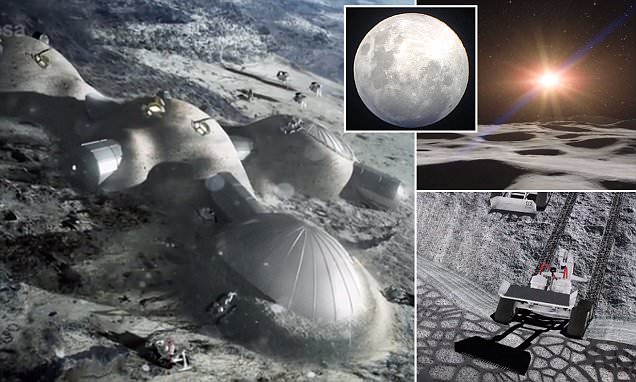AT PENPOINT
Pakistan’s piggybacking on the Chinese mission to the moon caused more enthusiasm among Pakistani officialdom, but was met with an apparent deafening silence among the Pakistani people. Perhaps one reason was that it did not provide any of the world firsts that have been a staple of the space race, ever since the USSR put Mankind’s first object into space, the satellite Sputnik, in 1957.
Compared with the first Man in Space (the USSR, 1961) or the first Man on the Moon (the USA 1969), a camera to photograph the Dark Side of the Moon doesn’t really cut it. It might be more worthwhile to examine the latest moon probe through the lens of the Indo-Pak rivalry.
It is also worth noting that the real rivalry is Sino-Indian. India has already done what China hopes to do, and study the Far Side of the Moon. The US-Soviet rivalry played out on the Near Side of the Moon.
India has already sent up three Chandrayaan missions since 2015. The one last year clearly did not provide enough time for Pakistan to plan its own venture with China. The plan must have been made before, perhaps when India started its Chandrayaan missions in 2008. The Chang’e-6 Chinese mission carried Pakistan’s IceCube-Q, which is supposed to separate from the main mission and take pictures both of the Dark Side and of the orbiter. The Change missions, which started in 2007, are supposed to culminate not just in crewed landings, but the establishment of a moon base. This is scheduled to take place sometime in the 2030s.
The Change missions started with an unmanned orbit of the moon, but have now graduated to bringing back samples of Moon Rock. That had been managed on the Near Side, when Chang’e 5 brought back 1.73 kg of moon rocks and dust from the northern hemisphere of the near side. This mission will attempt to bring samples from the southern hemisphere of the far side. Will Pakistani scientists be given some of those samples for study? That is not known.
One of the main problems will be expense. To give an idea of how much a space programme can cost, it should be kept in mind that the cost of the moon landing was $25 billion in 1969, which would have been $182 billion in 2023. There are definite costs of being first, but even the cost of replicating and modifying are immense.
It is perhaps the funds issue which is stopping individual European powers from attempting pace programmes of their own. Even though they have formed a European Space Agency, while retaining individual space agencies, that is piggypacking on the Chang’e-6 mission to put instruments on the moon. It might also be noted that the USSR did not put anyone on the moon, and the USA remains the only country to have achieved that expensive feat.
The great-power ambitions of India were expressed by its entry into the nuclear club. Pakistan was different, as it became a nuclear power without having any great-power ambitions, solely to counter India. India is looking at other avenues to prove itself, such as by developing second-strike capability through at least a sea leg of nuclear triad (through nuclear submarines), and now through moon landings.
Scientists are always ready to fall in with such great-power ambitions. After all, science is served. The amount of data that China and India bring to the table about the far side of the moon may or may not be comparable with that generated by the USA during the 1945 nuclear explosions, but it will be immense. It will be of interest of astronomers, and none to microbiologists, but that is the nature of science. It has piggybacked on political ambitions throughout history.
China also has the surpluses necessary to engage in a lunar programme, and has great-power ambitions. The ambition of establishing a lunar base indicates that China is also keeping an eye on getting some return for the expenditure, in the form of mineral ores. It is possible that the revival of US interest in space generally (the launching of the Hubble telescope, and of probes to Mars and to the asteroids) and the moon in particular (a landing this year, and a planned manned landing in 2025), may have been provoked by the Chinese and Indian programmes.
Pakistan does not have much choice. It has previous experience of playing second fiddle to China in mastering a new technology, in the JF-17’s development. In matters of technology, the USA has kept Pakistan on a tight leash, and has excluded it from its space programme. The realm of space cannot be avoided. But it does not seem Pakistan is ready. Its space programme cannot afford to be driven by any parochial rivalry. From space, the whole earth appears small, let alone the countries on it.
China already has 22 ‘taikonauts’ (Americans are called astronauts, the USSR’s spacemen cosmonauts). Pakistan has one, but she is actually an astronaut, being a passenger on the first Virgin Galactic flight in 2023. The first Indian who actually made it to space was an Indian Air Force squadron leader, Rakesh Sharma, who was on the Soyuz satellite in 1984, as part of a programme for foreigners to become cosmonauts. Sharma remains the only Indian citizen to have gone into space, though two US citizens of Indian origin have.
Some spacemen have done well for themselves. John Glenn, the first American in space, became a US Senator. Jügderdemidiin Gürragchaa, of Outer Mongolia, rose to chief of staff of the Outer Mongolia Air Defence Force, and then to Defence Minister. Similarly, in India, A.P.J. Abul Kalam was not merely a nuclear scientist, but one of the pioneers of the rockets that took India into space, and became President.
There is an example of dual-use. The rockets carrying nuclear payloads and manned spacecraft use similar technology. It is unlikely that the USA opposes proliferation to stop countries going into space, but that is the effect it has. All militaries have taken an interest in space exploration. Pakistan has had serving generals head the Space and Upper Atmosphere Research Organization (SUPARCO), while the USA has established a separate Space Force, based around the USAF’s Space Command.
Any military with nuclear weapons must take an interest in space, so as to defend the communication satellites integral to its weapons. Only an irresponsible nuclear power would risk being blinded by an enemy. Only an irresponsible nuclear power would attempt an attack without blinding the other side. Thus the Indo-Pak nuclear peace is also maintained in space.
However, two trends seem to be at work. First, nuclear proliferation is occurring. At first restricted only to great powers, now regional rivals have acquired them. Now, it seems, space programmes have come.
This raises a question about national identity. The 19th century saw the development of the idea that a nation needed a homeland of its own. That was the basis of the unification of first Italy and then Germany. It was the ideological platform on the basis of which the European empires were dismantled after World War II. Does it demand a space programme, a lunar base? Why is it that powers of immense power, but which have severe internal problems, like India, are going to the moon when the USA is looking at Mars?
There was a joke which had currency for a while on the Lahore stage, that Pakistan would ultimately inherit the earth. Because the advanced countries would be empty, everyone having gone into space. That seems to be the play-book the USA is following. It has got a headstart on everyone else, and can exploit the moon while India and China do things it had done half a century ago. By the tie the moon is played, it can throw them the scraps and head to Mars. When Mars is exhausted, where will it head? To Jupiter? Or the stars?
Pakistan does not have much choice. It has previous experience of playing second fiddle to China in mastering a new technology, in the JF-17’s development. In matters of technology, the USA has kept Pakistan on a tight leash, and has excluded it from its space programme. The realm of space cannot be avoided. But it does not seem Pakistan is ready. Its space programme cannot afford to be driven by any parochial rivalry. From space, the whole earth appears small, let alone the countries on it.























